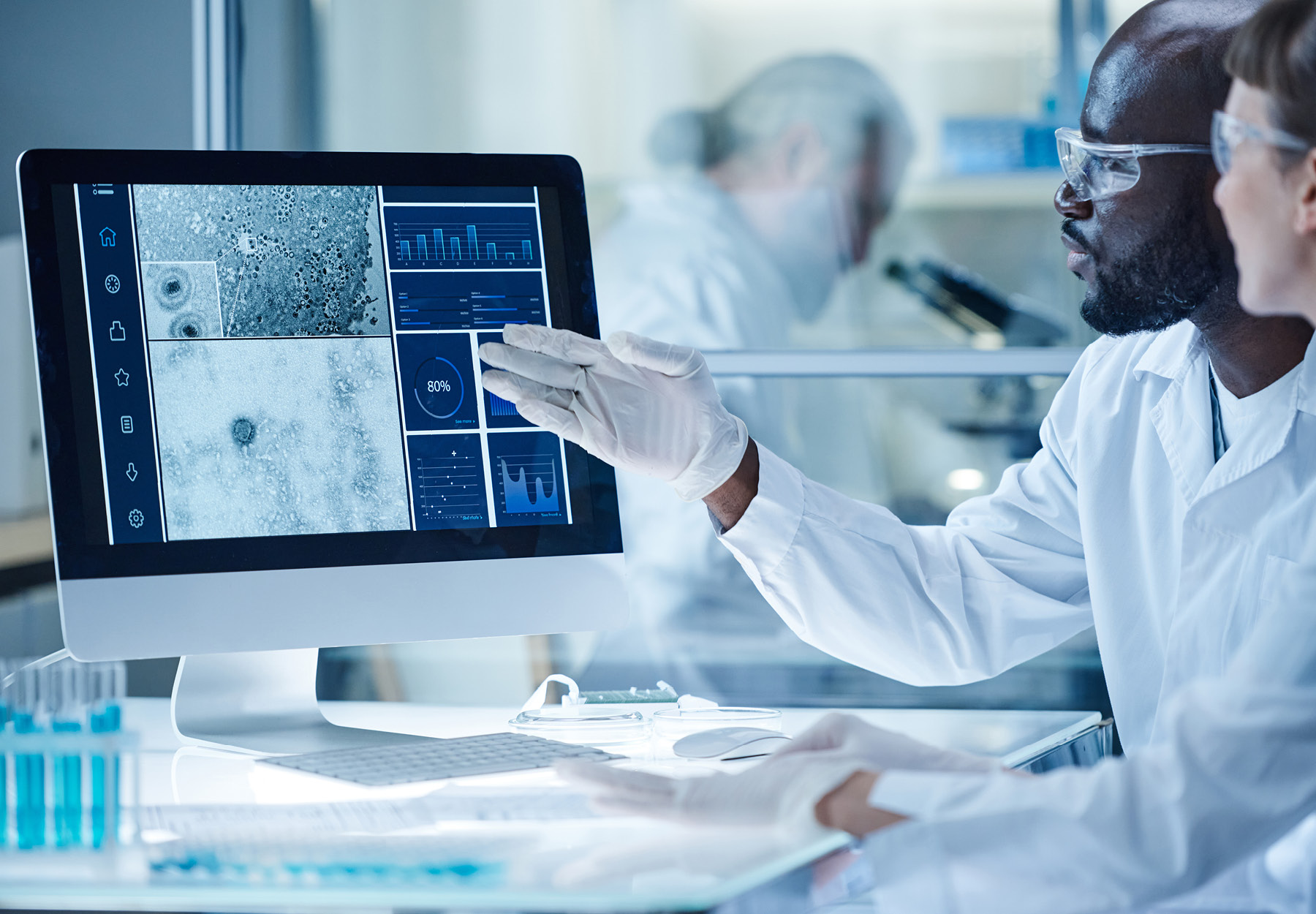An AI Invasion: Improving Breast Cancer Biopsies
Researchers report the first-ever routine clinical use of an AI-based tool for breast cancer biopsies in a pathology lab.

If you ask ChatGPT, an artificial intelligence (AI)-based chatbot, to write you a poem about cancer, you get something like this:
| Cancer, a disease both cruel and sly, That lurks within the body, unseen, It feeds upon our cells, and makes them die, And leaves us weak and frail, with hope foregone. But science, in her wisdom, has found ways To fight this foe, with medicines designed To target cancer’s cells, in many ways And slow, or stop, the damage in our mind. Chemotherapy, a treatment well known, That uses drugs to kill cells that divide Radiation therapy, another tone That uses beams to shrink tumors inside. Immunotherapy, a newer cure That helps the body fight cancer, pure and pure Each form of cancer is unique, it’s true But medicine, in strength, will see us through. |
The success of the chatbot is often said to be due to the vast, unprecedented amount of data it was trained on. But sophisticated AI programs aren’t limited to only composing content about cancer, researchers have also started to successfully apply this approach to cancer diagnostics.
While there are many previous reports on accurate clinical-grade prostate cancer algorithms, due to the complex nature of breast tissue and the pathological lesions presented in breast cancer, progress of breast cancer algorithms has been slow.1,2
An Expertly-Curated Algorithm for Quality Control of Breast Cancer Biopsies
However, recent research published in Breast Cancer from the Institut Curie in France demonstrated how AI can be successfully integrated into pathology laboratories to improve cancer diagnostics, in turn improving cancer care and patient outcomes.3 The researchers developed an AI-based quality control algorithm to review and validate the classification of breast cancer biopsies by training the program to identify 51 different cytological and morphological features associated with invasive breast carcinoma, including
-
- cancer-related classes (e.g., IC-NST, mucinous IDC, metaplastic carcinoma, ILC, TILs, ALI, ADH, and HG DCIS)
-
- clinical features (e.g., columnar cell change, phyllodes tumor, and microcalcifications), and
-
- normal tissue structures (e.g., blood vessels, smooth muscle, and normal ducts).
To accomplish this, they used data from more than 2,000 H&E slides previously conducted by 18 board-certified pathologists from nine different pathology labs. The slides were selected from a pool of about 115,000 to ensure a diverse collection of features, including rare or complex cases.
When they tested the program in a real-world clinical setting, it proved its value by identifying missed invasive and DCIS/ADH cases of breast cancer.
Specifically, the resulting algorithm identified invasive carcinoma with a sensitivity of ~98% (95% CI: 95.68%;99.33%) and specificity of ~96% (95% CI: 94.70%;97.38%), and identified DCIS/ADH with a sensitivity of ~92% (95% CI: 83.41%;97.23%) and specificity of ~92% (95% CI: 90.12%;93.93%). It also distinguished well between different subtypes and grades of invasive and in situ cancers vs ILC and of DCIS high and intermediate grade vs low grade/ADH.
While previous algorithms have also been developed to assess breast cancer biopsies, “to the best of our knowledge, this is the first report of an AI-based algorithm that can accurately detect such a wide range of clinically significant pathological features,” wrote the authors. “Moreover, this is the first-ever implementation of an AI-based tool for breast biopsies in routine clinical use in a pathology laboratory.”
The researchers credit the success of the algorithm to the expertly-curated data it was trained on, with extensive cross-validation of the algorithm on internal cases (standard practice), as well as external cases, totaling 7,480 cases and 15,124 slides.
In this instance, the algorithm was limited to H&E staining of breast cancer biopsies, however, it is already being trained on surgical specimens as well, including immunohistochemistry panels of breast cancer biomarkers. The researchers also plan to enhance its ability to detect ultrarare aggressive breast cancer subtypes, such as pleomorphic invasive lobular carcinoma, or ILC.
A Solution to the Shortage of Pathologists?
Concerns around the shortage of pathologists have been ongoing since the 1960s,4 however recent decades have seen an acceleration of the shortage of clinical lab professionals,5 and some believe AI-based solutions may be the answer.6
Here, the authors believe that adding this AI-based algorithm as a QC checkpoint to clinical pathology workflows will for the first time allow laboratories “to implement an extremely effective and accurate quality control process with a very small added work in terms of pathologist time,” ultimately improving the quality and standardization of breast cancer biopsy results and leading to better patient care and management.
References:
Subscribe to Clinical Diagnostics Insider to view
Start a Free Trial for immediate access to this article